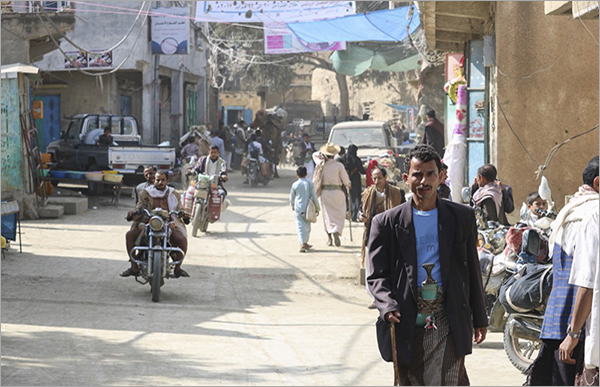Yemen: a nation on the brink of famine
Yemen is considered one of four countries in the world currently facing the threat of famine. Two years of continuous war have created the conditions for widespread hunger in the country of 28 million.
According to the latest UN data, almost 60 percent of Yemenis do not know where their next meal will come from, and 6.8 million people are in a state of acute malnutrition.
What led to this?
Even before the conflict erupted in early 2015, Yemen was one of the poorest countries in the Arab region.
Yemenis depended on imports for 90 percent of their staple foods such as wheat, rice and other cereal crops. Two years of war damaged ports, roads, bridges and led to food, medicine and fuel shortages.
Cut off from trade and income
A functioning and stable national banking system is vital in a country where 90 percent of staple foods are imported. The blocking of international financial transactions also led to a liquidity crisis for both US dollars and local currency.
As a result, civil servants and public sector workers who deliver critical social services, such as healthcare, have not been paid since August 2016. This undermines the humanitarian response but also severely affects individual purchasing power as 30 percent of Yemenis depend on government salaries and pensions.
Without income, families are unable to purchase food. More than half of Yemeni families are buying food on credit.
The average price of wheat flour was 32 percent higher in March 2017 compared to prices in March 2015.
Lack of work
Before the war, fish was Yemen’s second largest export and a key source of protein and energy for families. Naval activity and damage to ports, boats, power plants and processing factories have crippled Yemen’s fishing industry, mostly made up of family-owned businesses.
Two years of conflict has destroyed much of the industrial and manufacturing sector, including oil production which accounted for over half of Yemen’s exports in terms of GDP and employed many workers. In addition, 70 percent of Yemen’s small and medium businesses have laid off half of their workforce.
Even in areas free of armed violence, farmers struggle to address a nationwide food shortage because much of the land is covered in landmines and other unexploded hazards.
Three million Yemenis are currently displaced throughout the country, in need of work, safety, food, water and medical care.
For the full article, check the Medium
Lei Phyu | Medium | Published on April 19, 2017
